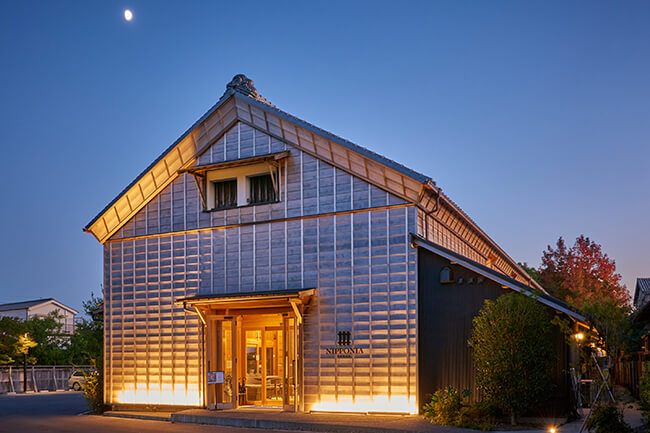Fermented French Cuisine at Sawara Merchant Town Hotel NIPPONIA
Nov 18,2022
Fermented French Cuisine at Sawara Merchant Town Hotel NIPPONIA
Nov 18,2022
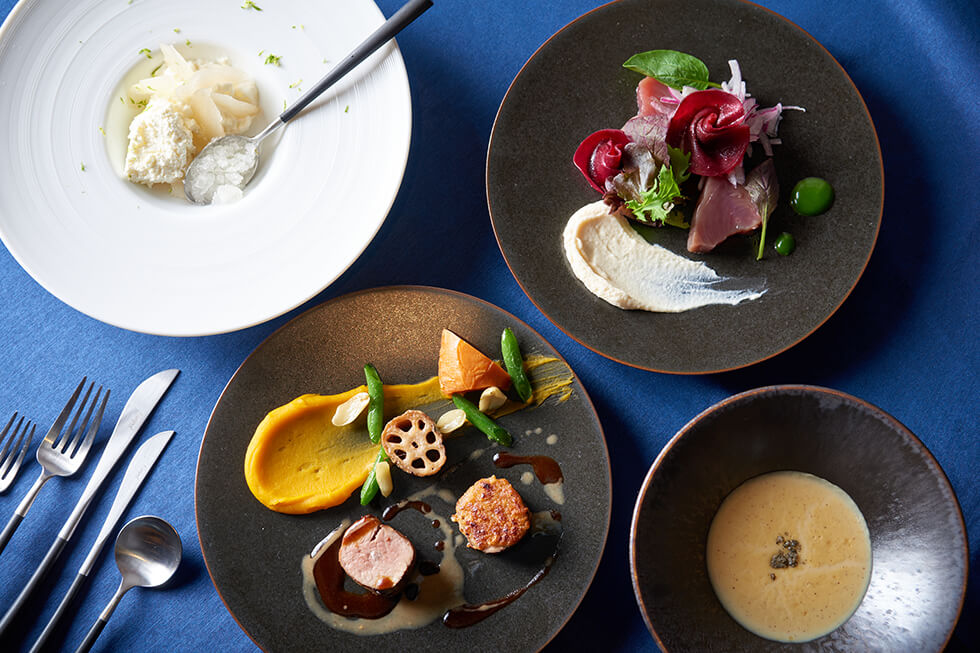

Sawara is a riverside town in the city of Katori, Chiba, that retains a strong sense of its former Edo period (1603 to 1868) charm.
Koda Yoshihiko, who was born and raised in the area, is the manager of the Nipponia Sawara Merchant Town Hotel and is spearheading efforts to revitalize the town by utilizing its historical buildings.
Sawara is a bustling tourist spot, thanks to its designation as a Preservation District for Important Groups of Historic Buildings. We spoke with Koda about the Le Un restaurant that serves fermented French cuisine, where you can get a sense of Sawara through food, and about his thoughts on Sawara as a town.
Sawara, because of its importance as a trading center, was once called the Little Edo of Hokuso [a former province of Northern Chiba]. Today, boats glide peacefully down the Ono River, as if tracing the history of the town which developed through water transportation. Former homes and storehouses of merchants from the Edo period through to the Taisho period (1912 to 1926) line the riverbank, creating a strange illusion of stepping back in time to the era when Sawara flourished as a river transportation hub on the Tone River waterway.
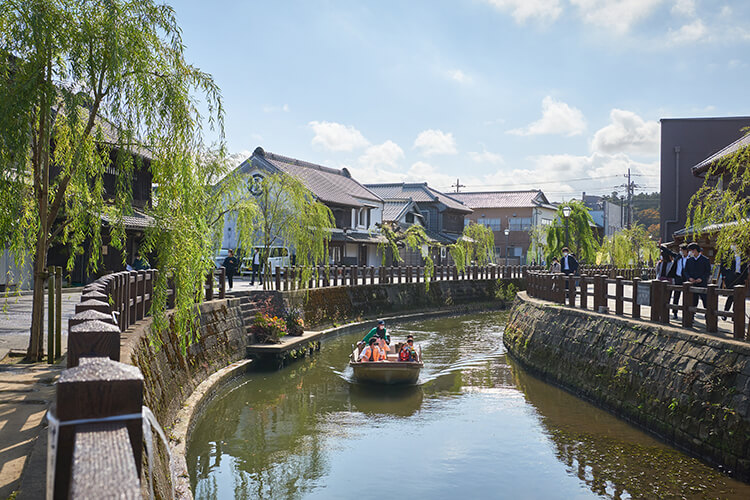
Crossing the Chukei Bridge and heading straight down the main street with the Ono River behind you, you’ll spot kimono shops, used bookstores, hardware stores, and other picturesque buildings selling traditional goods. Turning left past the Baba Honten Shuzo brewery, known for its Saijo Shiro Mirin rice wine, you will see the Kagura Building, a renovated storehouse where the Nipponia Sawara Merchant Town Hotel’s front desk is located.
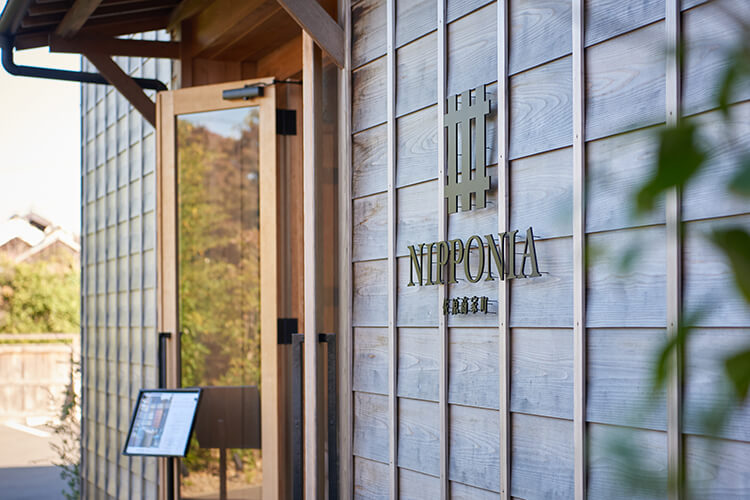
“The Kagura Building was originally a storehouse that belonged to Baba Honten Shuzo. After our guests check in at the Kagura Building, they stay in one of our four buildings that are named after varieties of irises, the town’s official flower.”
In most hotels, the front desk is in the hotel itself, but the Kagura Building houses only the front desk and the Le Un restaurant. The four accommodation buildings are dotted among the buildings lining the Ono River.
The accommodation buildings are named Seigaku, Yata, Goko, and Aoi. The renovated buildings used to be either the main houses or storehouses of merchant families who ran cotton manufacturing businesses and pawn shops, or early Showa period (1926 to 1989) ryotei restaurants or rice storehouses. The public roads running through Sawara function much like hotel corridors, and travelers head to their respective accommodation buildings as if they are Sawara residents returning home.
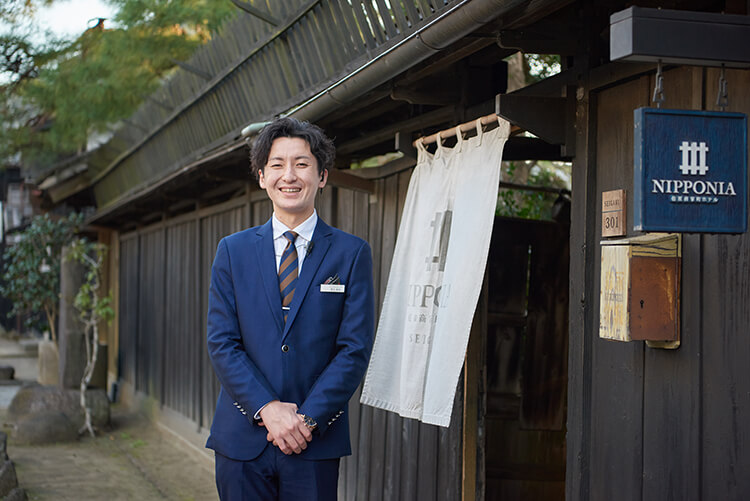
Koda Yoshihiko, manager of the Nipponia Sawara Merchant Town Hotel
The hotel has 13 rooms in total. Graded according to the rarity of the historic architecture, size, and comfort, each room has its own distinctive furnishings and ambience. For example, the rooms in the former rice storehouse, once stacked high with rice bags, feature high ceilings and an open, airy feel. And the rooms in the storehouse that formerly held household goods require climbing an old wooden staircase to reach the second-floor bedroom.
“Our theme is making you feel like you are actually living in Sawara. We want you to tangibly feel the history of Sawara and the building you’re staying in, and fully enjoy the time you can experience only here. The buildings have been renovated while retaining as much of their original character as possible. Compared to modern buildings, they have less soundproofing and insulation, but we encourage you to embrace this as part of the authentic charm of these historic residences.”
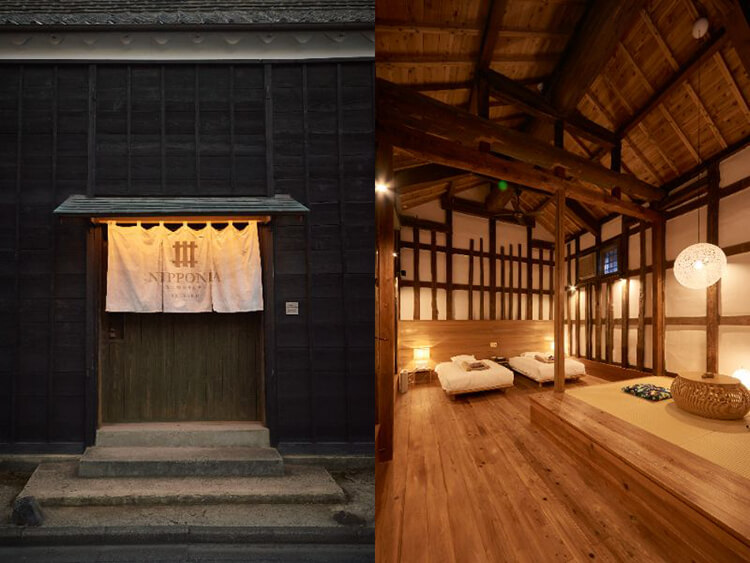
Dining, of course, is a part of staying in a hotel. But many customers come back to the Le Un restaurant in the Kagura Building just to experience the dining part again.
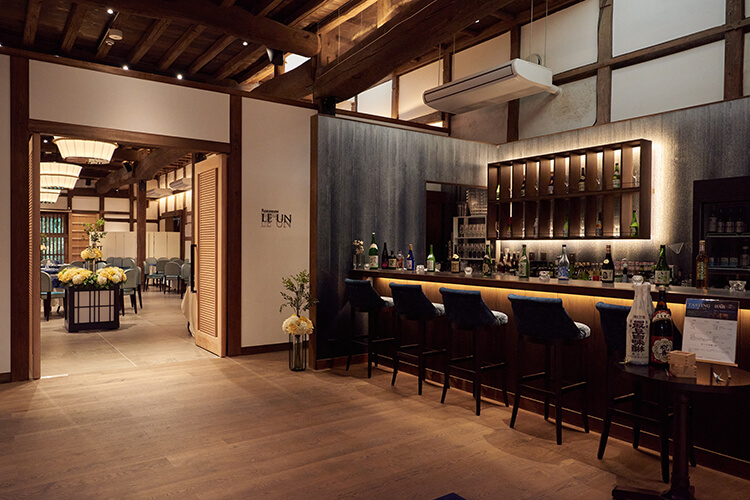
Surrounded by ocean waters on three sides and blessed with fertile land, Chiba has a bounty of fine ingredients from both land and sea. Le Un is committed to practicing local production for local consumption, insisting on locally grown vegetables from Sawara and sourcing seafood directly from Chiba’s fishing ports. Some guests are so captivated by the restaurant’s flavors that they apparently visit from Tokyo every two months. As Koda says: “The restaurant’s cuisine has gained its own following.”
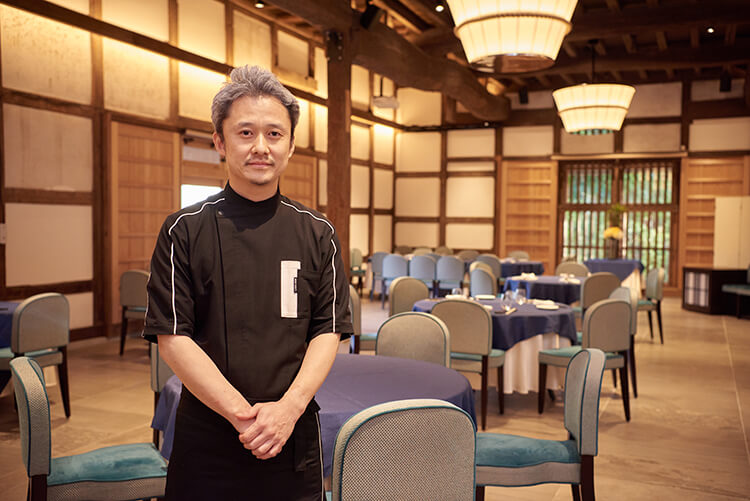
Amau Hidemi, head chef of Le Un
Fitting for a trip to savor Japan’s history, Le Un is particular about Japan’s traditional fermentation, using saké lees, koji malt, and other fermented foods to accent dishes. In addition to simmering beets in local unfiltered soy sauce and adding red miso to Chiba’s famous peanuts to create sauces, the restaurant makes frequent use of koji, using it as a seasoning or in amazake [a sweet drink made from koji] and salted koji.
For its granité, a sorbet-like dessert featuring Chiba-grown pears, Le Un subtly incorporates fermentation in the form of ingredients like Koshihikari rice from Sawara — which is also a rice-producing region, amazake, yogurt, and sudachi citrus.
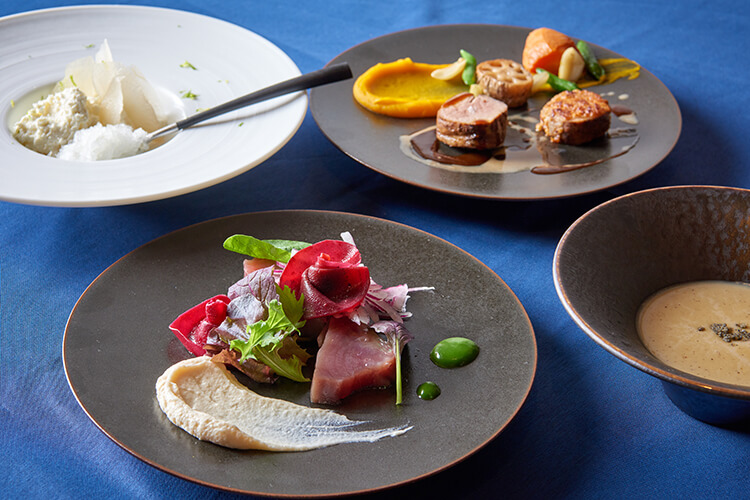
“While taste is paramount, our underlying desire, given our unique situation, is to have our guests savor dishes that can be enjoyed only in this location and this building. Our French cuisine incorporates fermentation and brewing to enhance the flavors of the ingredients, and we change our menu offerings each season.
“We naturally source seasonal ingredients, and we build our menu around ingredients recommended by farmers. I participate in the harvests myself because I want to really understand Sawara’s vegetables before incorporating them in our dishes,” explains Amau Hidemi, head chef of Le Un.
What’s common to every dish is that it can be had only at Le Un. Savoring cuisine unique to Sawara in a building that exists only in Sawara is a priceless, one-of-a-kind experience.
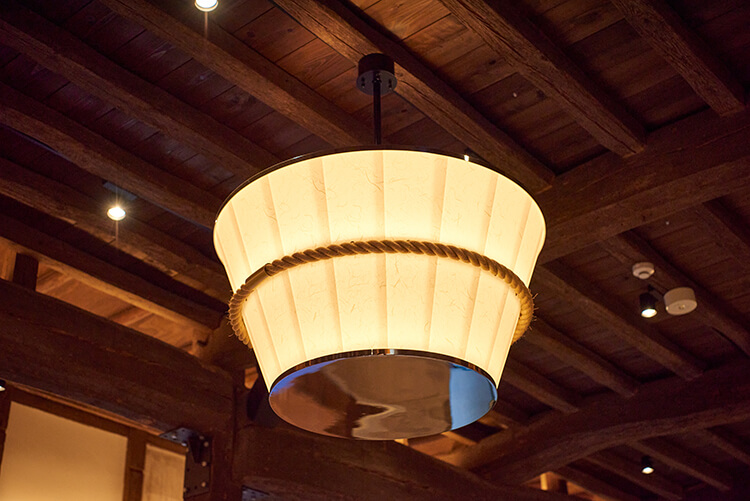
The restaurant’s lighting was modeled after saké barrels
Koda describes how to enjoy Le Un in the following way.
“If we served the same tastes as in Tokyo, there would be no point in eating at Nipponia in Sawara. This is why we want our guests to enjoy dishes they can have only if they come to Sawara. Also exquisite are the cocktails made with Saijo Shiro Mirin from Baba Honten Shuzo, which owns this storehouse. We have non-alcoholic versions as well, so everyone can experience the pure, unadulterated sweetness of this finest mirin.”
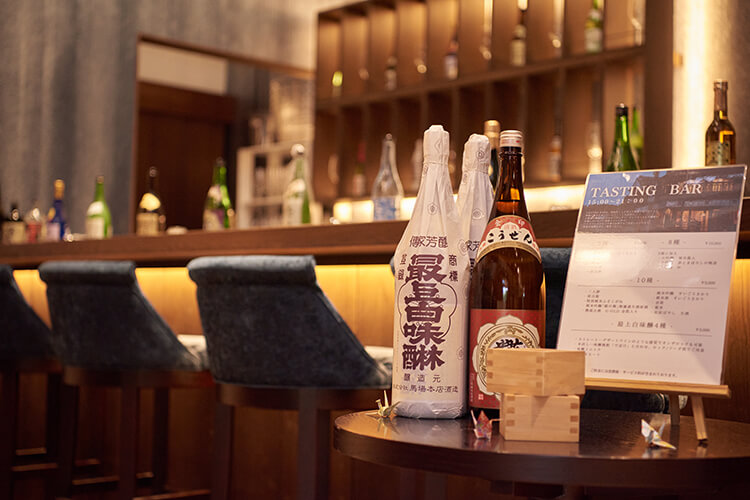
Koda notes that since the Nipponia Sawara Merchant Town Hotel opened, he has gotten more requests from local students looking to interview him about the buildings.
He is extremely pleased to see these young people noticing the value of the buildings the community has long taken for granted, and the history tied to them, as well as taking an interest in the Nipponia project, which aims to develop the town while carefully preserving the buildings and their history.
“I’d be happy if even one of these kids someday aspires to work at Nipponia. In the meantime, I want to make use of the many untapped tourism resources in Sawara and make more fans of the town. In the future, I want to help create communities we can take more pride in, from Sawara to Chiba, and from Chiba to the greater Kanto region.”
